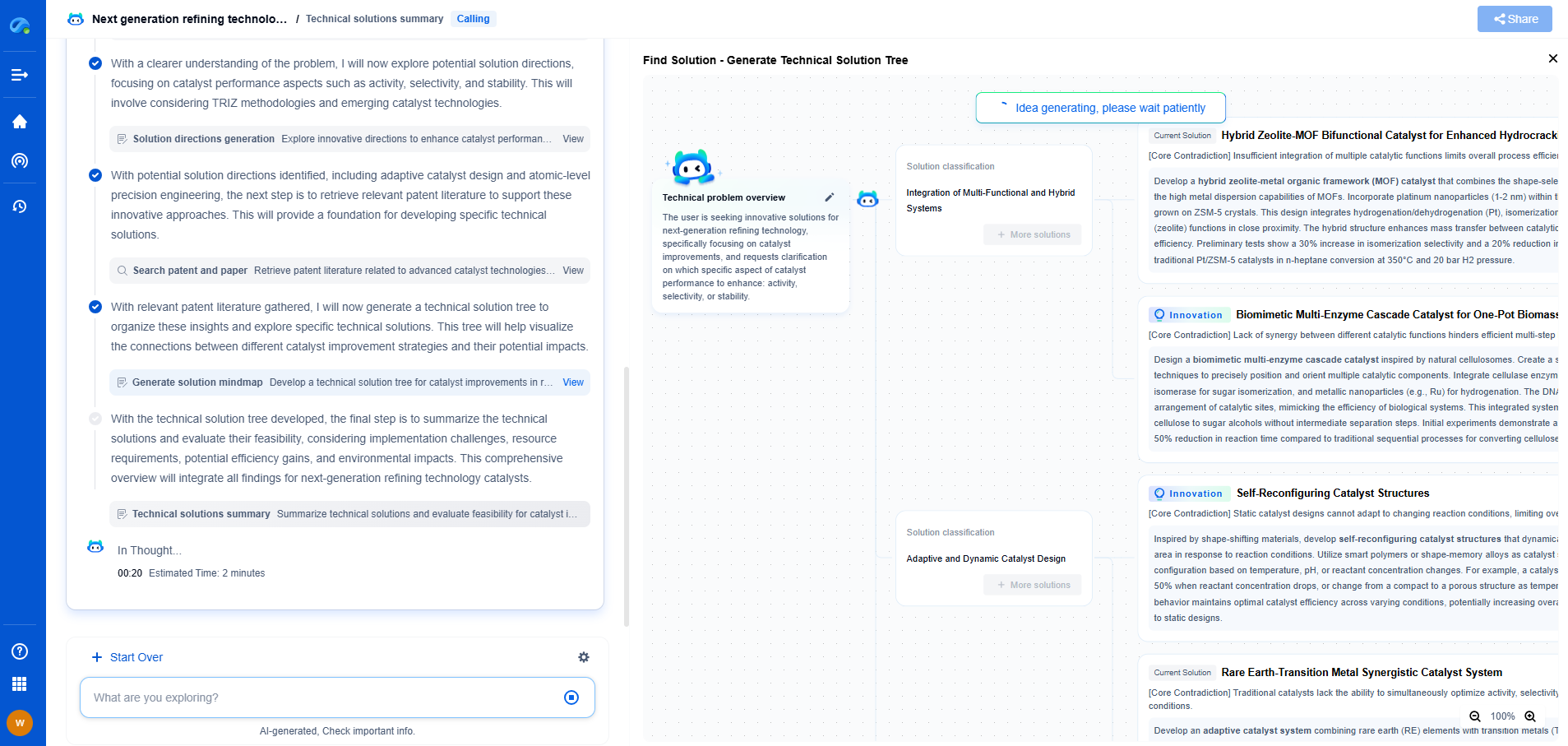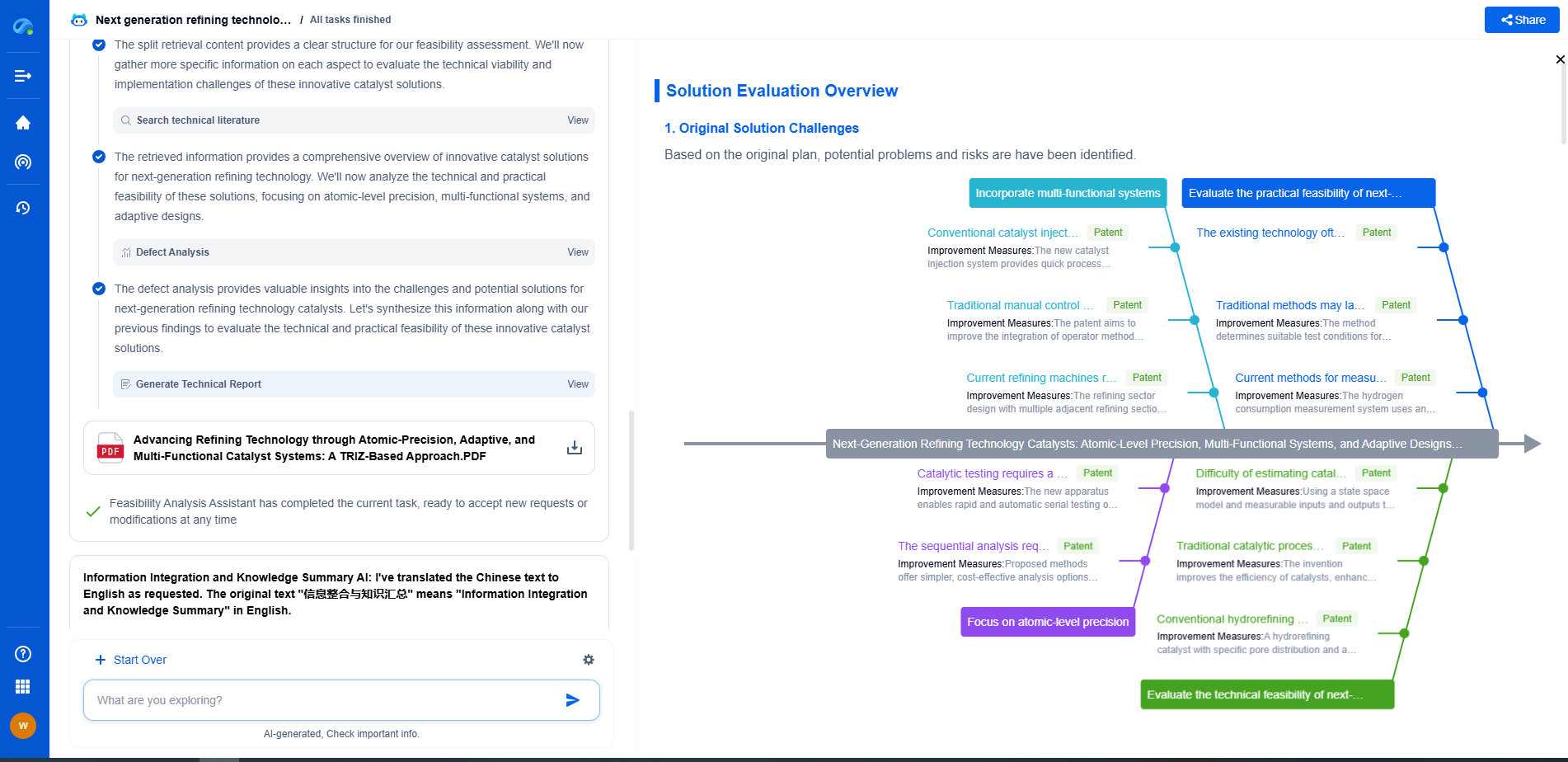What Is Model Quantization?
JUN 26, 2025 |
In recent years, the buzz around artificial intelligence and machine learning has surged, with models becoming increasingly complex. However, this complexity often comes at the cost of high computational resources and power consumption. This is where model quantization steps in as a crucial technique, offering a more efficient solution for deploying AI models, especially on edge devices like smartphones and IoT devices. But what exactly is model quantization, and why is it so important?
What is Model Quantization?
At its core, model quantization is the process of reducing the precision of the numbers that represent a model's parameters. In most machine learning models, these parameters are typically 32-bit floating-point numbers. Quantization involves converting these numbers into lower-bit representations, such as 16-bit, 8-bit, or even binary representations. This reduction in precision can significantly decrease the model's size and the computational power required to process it, making it faster and more efficient.
Why Quantization Matters
The surge in mobile and edge AI applications necessitates models that are not only accurate but also lightweight and fast. Quantization plays a vital role in achieving these objectives by:
1. Reducing Model Size: By lowering the bit width of model parameters, quantization can drastically reduce the size of a model. This makes it feasible to deploy sophisticated AI models on devices with limited storage.
2. Enhancing Speed: With fewer bits to process, computational tasks become faster. This speedup can be crucial for real-time applications, such as live video processing or gaming.
3. Lowering Power Consumption: Smaller models consume less power, which is a significant advantage for battery-operated devices, ensuring longer battery life and sustainable energy use.
Types of Quantization Techniques
There are several quantization techniques, each suited for different applications and requirements. Some of the popular methods include:
1. Uniform Quantization: This involves mapping the model's weights and activations to a fixed set of levels. It's simple and efficient, making it a popular choice for many applications.
2. Non-Uniform Quantization: Unlike uniform quantization, non-uniform approaches use varying step sizes for different ranges of values. This can offer better precision for certain datasets or model architectures but might be more complex to implement.
3. Dynamic Quantization: Here, the model's weights are stored with reduced precision, and the computations are carried out in higher precision. This method is often utilized during inference to improve model efficiency without significant loss in accuracy.
4. Post-Training Quantization: This occurs after the model has been fully trained. It's beneficial because it allows developers to fine-tune the quantization process without altering the model's training procedure.
Challenges and Considerations
Despite its advantages, model quantization comes with its set of challenges. One of the primary concerns is the potential loss of accuracy. Reducing the bit width can lead to less precise calculations, which might degrade the model's performance, particularly in tasks that require high precision. Therefore, it's crucial to strike a balance between efficiency and accuracy.
Another consideration is the compatibility of quantized models with existing hardware. Not all hardware supports lower precision computations, which can limit the applicability of quantization in some scenarios.
Future of Model Quantization
With the growing demand for AI on edge devices, model quantization is likely to become even more integral to machine learning workflows. Advances in hardware, such as specialized AI accelerators, are expected to further support and enhance the capabilities of quantized models. Additionally, research is continually improving quantization methods, aiming to minimize accuracy loss and expand the technique's applicability.
In conclusion, model quantization is a powerful tool in the AI arsenal, enabling the deployment of sophisticated models in resource-constrained environments. As technology continues to evolve, quantization techniques will likely become even more refined, opening up new possibilities for efficient and effective AI applications.
Unleash the Full Potential of AI Innovation with Patsnap Eureka
The frontier of machine learning evolves faster than ever—from foundation models and neuromorphic computing to edge AI and self-supervised learning. Whether you're exploring novel architectures, optimizing inference at scale, or tracking patent landscapes in generative AI, staying ahead demands more than human bandwidth.
Patsnap Eureka, our intelligent AI assistant built for R&D professionals in high-tech sectors, empowers you with real-time expert-level analysis, technology roadmap exploration, and strategic mapping of core patents—all within a seamless, user-friendly interface.
👉 Try Patsnap Eureka today to accelerate your journey from ML ideas to IP assets—request a personalized demo or activate your trial now.
- R&D
- Intellectual Property
- Life Sciences
- Materials
- Tech Scout
- Unparalleled Data Quality
- Higher Quality Content
- 60% Fewer Hallucinations
Browse by: Latest US Patents, China's latest patents, Technical Efficacy Thesaurus, Application Domain, Technology Topic, Popular Technical Reports.
© 2025 PatSnap. All rights reserved.Legal|Privacy policy|Modern Slavery Act Transparency Statement|Sitemap|About US| Contact US: help@patsnap.com

